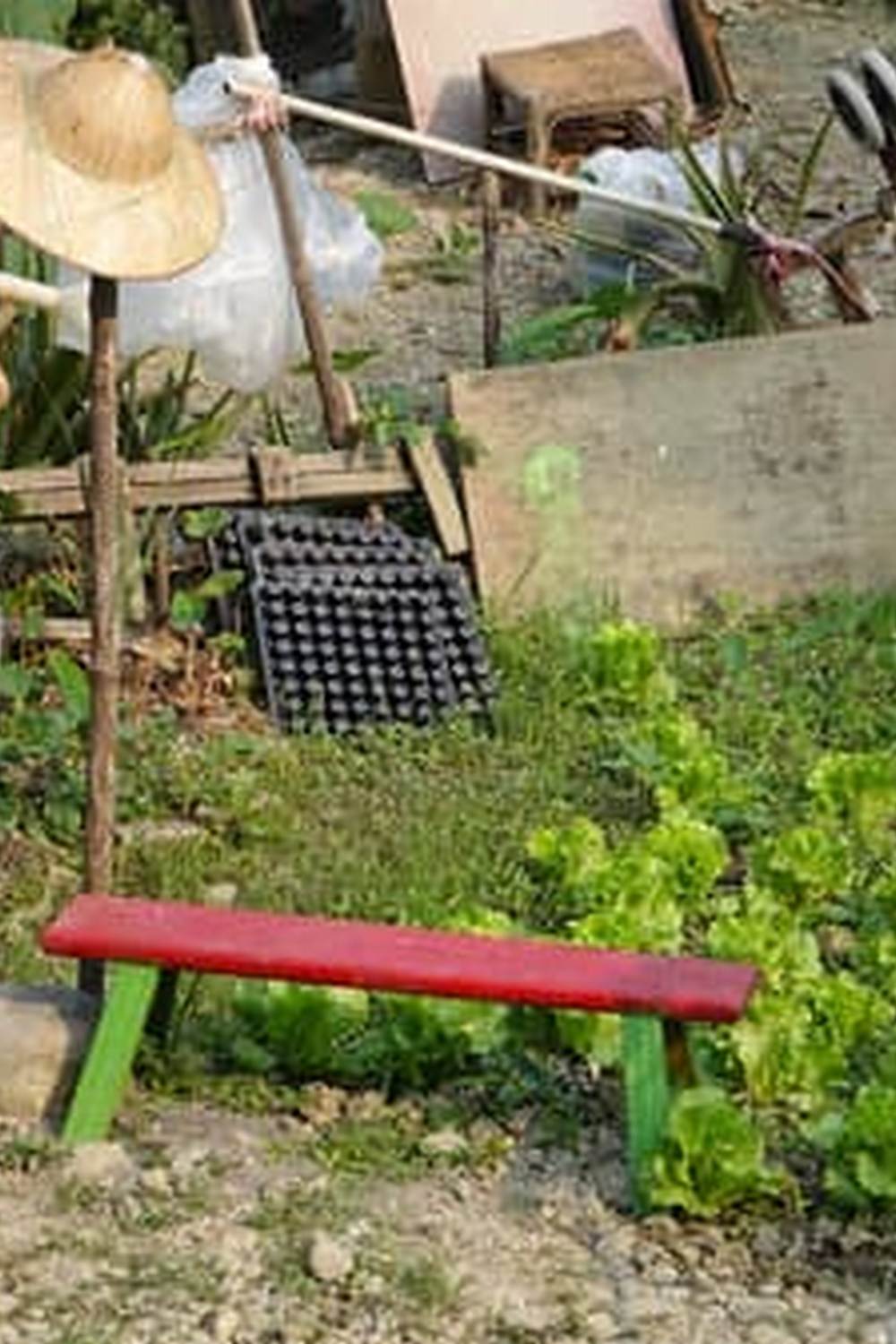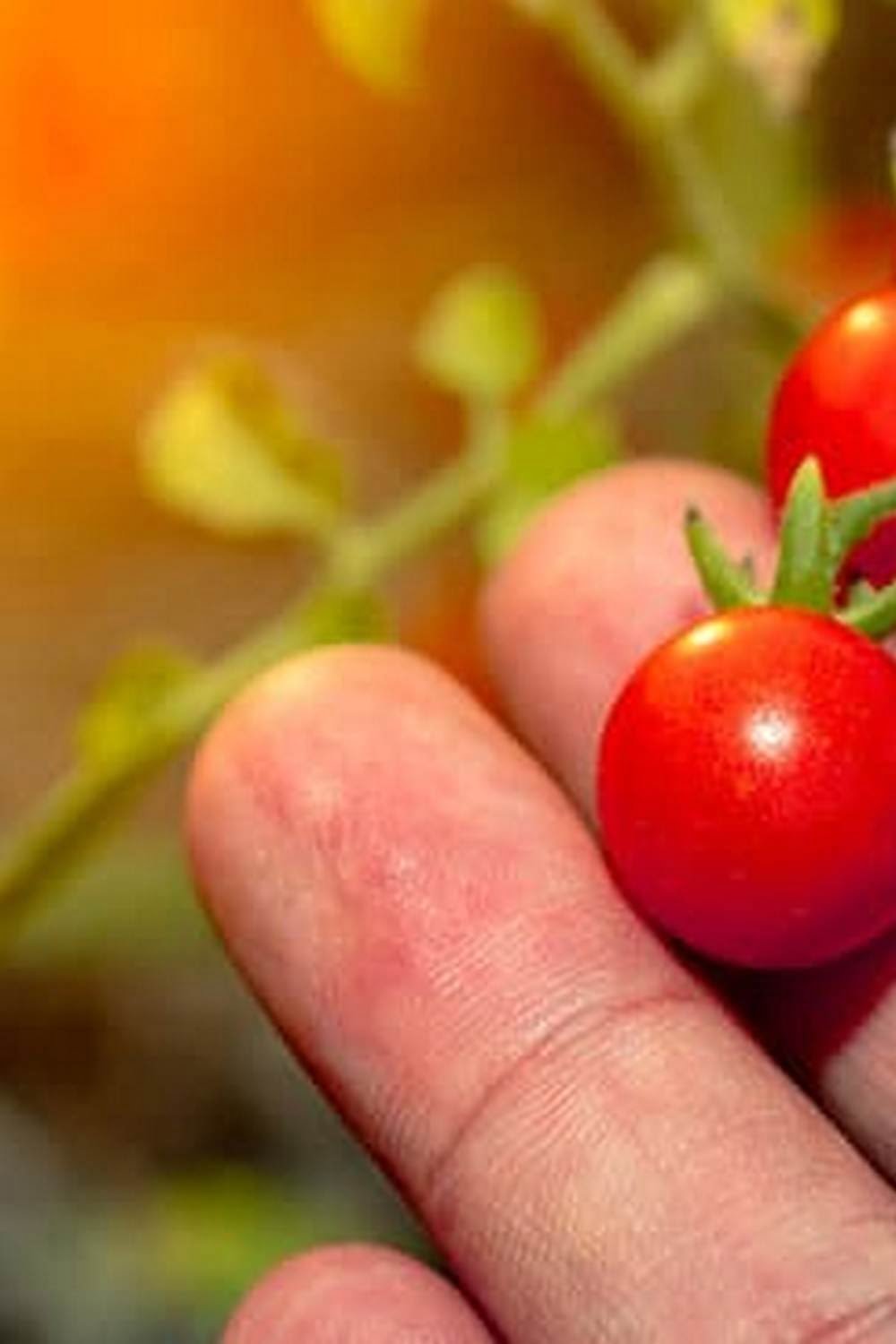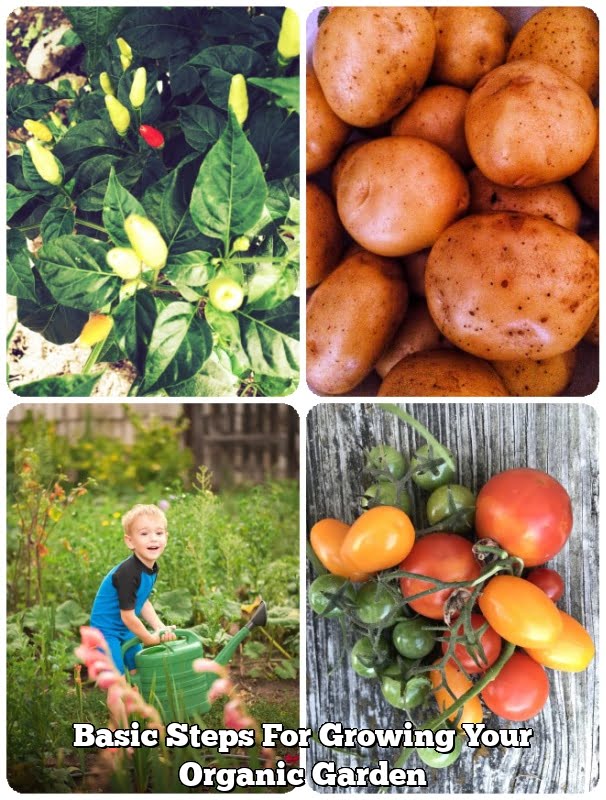Are you eager to start your own vegetable garden but not sure where to begin? In this article, we will guide you through the essential vegetable gardening steps to help you get started on your journey to cultivating a thriving garden. From selecting the right vegetables for your space to harvesting the fruits of your labor, we will cover everything you need to know to create a successful and bountiful vegetable garden.
When it comes to vegetable gardening steps, the first crucial aspect is choosing the right vegetables for your garden. This involves considering factors such as climate, space availability, and personal preferences. Once you have selected the vegetables you want to grow, it’s time to prepare the soil for planting. Properly preparing the soil is vital for fostering healthy plant growth and maximizing your harvest.
After preparing the soil, the next step in vegetable gardening is planting seeds or seedlings. Whether you opt for starting plants from seeds indoors or purchasing seedlings from a nursery, this step sets the foundation for your garden’s success. As your plants grow, they will require consistent watering and fertilizing, which are essential aspects of maintaining a flourishing vegetable garden. Keep reading to learn more about each of these essential steps in detail.
Choosing the Right Vegetables for Your Garden
When it comes to starting your own vegetable garden, one of the key steps is choosing the right vegetables to plant. There are numerous factors to consider when making this important decision, including your location, available space, and personal preferences. By carefully selecting the vegetables that are best suited for your specific circumstances, you can ensure a successful and bountiful harvest.
Consider Your Climate and Location
The first step in choosing the right vegetables for your garden is to consider your climate and location. Different vegetables thrive in different climates, so it’s important to choose varieties that are well-suited to the conditions in your area.
For example, if you live in a region with hot summers, you may want to consider planting heat-tolerant vegetables such as tomatoes, peppers, and eggplant. On the other hand, if you live in a cooler climate, you might opt for cold-hardy crops like broccoli, carrots, and lettuce.
Assess Your Available Space
Another important factor to consider when choosing vegetables for your garden is the amount of space you have available. If you have limited space, you may want to focus on planting compact or bush varieties that can thrive in containers or small raised beds. Alternatively, if you have plenty of space to work with, you may have more flexibility in terms of the types and quantities of vegetables you can plant.
Consider Your Preferences and Needs
Finally, it’s essential to take into account your own personal preferences and dietary needs when selecting vegetables for your garden. Consider which vegetables you and your family enjoy eating the most and prioritize those in your planting plan. Additionally, if there are specific nutritional needs or dietary restrictions to consider, be sure to choose vegetables that align with these requirements.
By carefully considering these factors – including climate and location, available space, and personal preferences – you can make informed decisions about which vegetables to plant in your garden. Taking these considerations into account during the planning stages will set the stage for a successful vegetable gardening experience.
Preparing the Soil for Planting
When it comes to vegetable gardening, one of the most crucial steps is preparing the soil for planting. The success of your garden largely depends on the condition of the soil, so it’s important to put in the time and effort to ensure that it is ready for your plants.
Testing and Amending the Soil
Before you start planting, it’s a good idea to test your soil to determine its pH levels and nutrient content. You can purchase a DIY soil testing kit or send a sample to a local agricultural extension office for analysis. Once you have the results, you may need to amend the soil by adding compost, organic matter, or specific fertilizers to create an ideal growing environment for your vegetables.
Tilling and Aerating
After addressing any soil deficiencies, you’ll want to till or loosen the soil to create a suitable bed for planting. Tilling helps break up compacted earth and improves drainage while aerating ensures that oxygen can reach plant roots. Be mindful not to over-till as this can disrupt beneficial microorganisms in the soil.
Creating Planting Beds
Finally, consider creating designated planting beds within your garden space. Raised beds are popular options as they provide better drainage and allow for easier weed control. You can also incorporate pathways between beds for easy access and maintenance. Take these essential steps into consideration when preparing your soil; doing so will lay a solid foundation for a successful vegetable garden season after season.
Planting Seeds or Seedlings
Once you have chosen the right vegetables for your garden and prepared the soil, the next step in vegetable gardening is to plant seeds or seedlings. This step requires careful consideration and attention to ensure that your plants will grow healthy and strong.
For planting seeds, it is important to follow the instructions on the seed packet regarding the depth at which they should be planted and the distance between each seed. Some seeds may need to be started indoors in pots before transplanting them into the garden. It is also important to water the seeds gently after planting and keep the soil consistently moist until germination.
On the other hand, if you choose to plant seedlings, make sure to dig a hole large enough to accommodate their roots. Gently remove each seedling from its container and place it in the hole, covering the roots with soil. Water the seedlings immediately after planting to help them establish their roots in their new environment.
| Planting Seeds | Planting Seedlings |
|---|---|
| Follow instructions on seed packet | Dig a hole large enough for roots |
| Keep soil consistently moist until germination | Gently remove from container and place in hole |
Whether you are planting seeds or seedlings, be sure to provide protection from extreme weather conditions such as frost or heavy rain. With proper care, your vegetable garden will soon begin to thrive, bringing you homegrown produce that you can enjoy with your family and friends.
Watering and Fertilizing Your Vegetable Garden
Watering and fertilizing are crucial steps in maintaining a healthy and thriving vegetable garden. Properly providing water and nutrients will promote the growth of your vegetables, leading to a bountiful harvest.
When it comes to watering your vegetable garden, it is important to be consistent. Most vegetables require at least 1 inch of water per week, either from rainfall or irrigation. However, it’s essential to adjust this amount based on the specific needs of the vegetables you are growing.
For example, leafy greens may need more frequent watering compared to root vegetables. In addition, watering in the morning is ideal as it allows the foliage to dry off during the day, preventing diseases caused by excess moisture.
In terms of fertilizing your vegetable garden, it is recommended to perform a soil test to determine which nutrients are lacking in your soil. This will help you choose the right type of fertilizer for your specific needs. Generally, organic fertilizers such as compost or manure are preferred as they improve soil structure and provide long-term benefits to the garden.
It’s important to follow the instructions on the fertilizer package and avoid over-fertilizing, as this can harm your plants rather than help them thrive. By paying attention to these watering and fertilizing techniques, you can ensure that your vegetable garden remains healthy and fruitful throughout the growing season.
Managing Pests and Weeds
Pests and weeds can pose a significant threat to your vegetable garden, but with the right management strategies, you can keep them under control. One of the most effective ways to prevent pests and weeds from destroying your vegetables is to take proactive measures. This includes regularly inspecting your plants for any signs of pest infestation or weed growth. By catching these issues early, you can address them before they become a major problem.
There are several organic methods you can use to manage pests and weeds in your vegetable garden. One popular approach is companion planting, which involves growing certain plants together to repel pests or attract beneficial insects. Another option is using natural predators like ladybugs or lacewings to eliminate harmful pests. Additionally, mulching around your plants can help suppress weed growth by blocking sunlight and preventing weed seeds from germinating.
If pest or weed problems persist despite your best efforts, there are eco-friendly alternatives available such as neem oil or insecticidal soap for controlling insects, and vinegar-based sprays for managing weeds. These options allow you to combat pests and weeds while minimizing harm to the environment.
By taking these proactive steps to manage pests and weeds in your vegetable garden, you can ensure that your plants remain healthy and productive throughout the growing season. With proper care and attention, you can maintain a bountiful harvest of fresh, delicious vegetables for you and your family to enjoy.
Harvesting Your Vegetables
Once your vegetable garden has been successfully planted and maintained, it will soon be time to start harvesting the fruits of your labor. Harvesting your vegetables is an important step in the vegetable gardening process, as it ensures that you are able to enjoy the fresh, homegrown produce that you have worked so hard to cultivate. Below are some key steps and tips for harvesting your vegetables effectively.
Firstly, it is essential to know when each type of vegetable is ready for harvest. Different vegetables have different indicators that they are ready to be picked, such as size, color, or firmness. For example, tomatoes should be picked when they are fully colored and slightly soft, while carrots should be harvested when they reach their desired size and color.
Once you have identified that your vegetables are ready for harvest, it is important to use the correct tools for the job. Using sharp scissors or pruning shears can help ensure a clean cut on the vegetable’s stems or vines without causing damage to the plant. This can also prevent any potential bruising or tearing of the vegetable itself.
When harvesting your vegetables, it is best to do so in the morning when temperatures are cooler. This helps preserve the freshness and flavor of the produce before any heat of the day can cause wilting or dehydration. Additionally, proper storage after harvesting is crucial in maintaining their quality until consumption.
| Vegetables | Harvesting Indicators |
|---|---|
| Tomatoes | Fully colored and slightly soft |
| Carrots | Desired size and color |
| Lettuce | Leaves are large enough for use |
Tips for Maintaining a Successful Vegetable Garden
Maintaining a successful vegetable garden requires ongoing care and attention. Here are some essential tips to ensure that your garden continues to thrive:
- Regular Maintenance: Regularly inspect your plants for any signs of disease or pest infestations. Remove any dead or damaged leaves, as well as any pests you may find. Keeping your plants healthy will help them produce a bountiful harvest.
- Proper Watering: It’s important to water your vegetable garden consistently, especially during hot and dry periods. Be sure to water at the base of the plants to minimize evaporation and reduce the risk of fungal diseases.
- Weeding: Keep up with regular weeding to prevent weeds from competing with your vegetables for nutrients and water. Use a hoe or hand tools to remove weeds carefully, making sure not to disturb the roots of your crops.
In addition to these maintenance tasks, it’s essential to stay organized and keep track of the progress of your vegetable garden. Consider keeping a gardening journal where you can note planting dates, harvest yields, and any issues that arise throughout the growing season. This will help you make informed decisions in future growing seasons.
Finally, consider continuing your education in vegetable gardening by attending workshops or classes, joining a gardening club, or seeking advice from experienced gardeners in your community. Sharing knowledge and experiences with other gardeners is an excellent way to learn new techniques and stay motivated in maintaining a successful vegetable garden.
By following these tips for maintaining a successful vegetable garden, you can ensure that your plants continue to thrive throughout the growing season, leading to healthy and delicious homegrown vegetables for you and your family to enjoy.
Conclusion and Next Steps for Your Garden
In conclusion, vegetable gardening can be a rewarding and fulfilling experience for anyone with the passion and dedication to see it through. By following the right vegetable gardening steps, you can enjoy a bountiful harvest of fresh, organic produce right from your own backyard. Starting with selecting the right vegetables and preparing the soil, to planting, watering, and managing pests, each step is crucial in ensuring a successful garden.
Moving forward, it’s important to continue caring for your garden by regularly watering and fertilizing the plants as needed. Keep a close eye on any signs of pests or weeds and take necessary action to manage them without harming your crops. As your vegetables begin to mature and ripen, make sure to harvest them at the right time for optimal flavor and nutrition. By staying proactive and dedicated throughout the entire process, your garden will continue to thrive.
As you continue on your vegetable gardening journey, consider expanding your knowledge by trying new vegetables or experimenting with different gardening techniques. Joining a local gardening group or seeking advice from experienced gardeners can also provide valuable insights for improving your skills. Remember that every season presents new opportunities for learning and growth in your garden, so stay curious and open-minded in exploring different approaches to cultivating a healthy and productive vegetable garden.
Frequently Asked Questions
How Do You Plant a Vegetable Garden Step by Step?
Planting a vegetable garden requires several steps. First, choose a location with plenty of sunlight and good soil. Then, prepare the soil by removing weeds and adding compost. Next, plan out the layout of your garden and plant your seeds or seedlings. Finally, water regularly and monitor for pests and diseases.
What Order Should I Plant My Vegetable Garden?
When planning the order of planting in your vegetable garden, consider the specific needs of each plant. Generally, it’s best to start with cool-season crops like lettuce and spinach, followed by warm-season crops like tomatoes and peppers. Vining or sprawling plants like cucumbers and squash can be planted towards the edges to save space.
How Do You Prepare Ground for a Vegetable Garden?
To prepare the ground for a vegetable garden, start by clearing the area of any debris or weeds. Test the soil to determine its pH level and nutrient content, then amend it as needed with organic matter such as compost or aged manure.
Use a tiller or shovel to work the amendments into the soil thoroughly before planting your vegetable seeds or seedlings.

If you’re looking to get into vegetable gardening, or are just looking for some tips on how to make your current garden better, then you’ve come to the right place! My name is Ethel and I have been gardening for years. In this blog, I’m going to share with you some of my best tips on how to create a successful vegetable garden.





